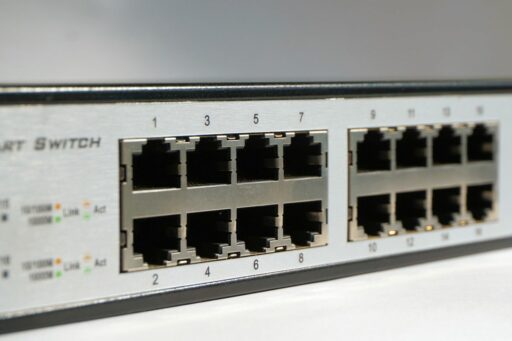Table of Contents
In an era where data is the cornerstone of all major decisions, understanding data quality is paramount. This article delves into the essence of data quality, its importance, and the fundamental practices to ensure that the data we utilize is accurate, reliable, and suitable for its intended purpose. We’ll explore the impact of data quality on decision-making, operational efficiency, and customer satisfaction, as well as the challenges and benefits associated with maintaining high data quality standards.
Key Takeaways
- Data quality is critical as it directly influences decision-making, operational productivity, and customer satisfaction.
- Ensuring data quality involves maintaining accuracy, completeness, relevance, and consolidation to prevent duplication.
- Data wrangling and robust database management are essential for transforming raw data into actionable insights.
- Poor data quality can lead to operational errors, non-compliance risks, and flawed business strategies.
- High data quality strengthens competitive advantage by enhancing business strategies and improving analytics.
Understanding Data Quality
Definition and Significance
Data quality is a measure of the condition of data based on factors such as accuracy, completeness, reliability, and relevance. High-quality data is essential for organizations to make informed decisions, strategize effectively, and maintain operational excellence. Without it, businesses risk making poor decisions based on inaccurate or incomplete information.
To ensure data quality, organizations must engage in data normalization, which is a process that makes data consistent and easily comparable. Normalization involves several steps, including removing redundancy, grouping related data, and resolving inconsistencies. This process is crucial for efficient data analysis and maintaining the integrity of data sets. Tools and methodologies like the CLARIN infrastructure support text normalization, and database normalization forms such as 1NF (First Normal Form), 2NF (Second Normal Form), and 3NF (Third Normal Form) are examples of how data can be structured to facilitate analysis.
The significance of data quality extends beyond mere data management; it is a foundational aspect of a business’s ability to operate, innovate, and compete in today’s data-driven landscape.
Understanding and improving data quality is not a one-time task but a continuous process. The DATA QUALITY PROCESS includes steps to Discover, Define, Integrate, and Monitor data quality. Each step is critical to maintaining the standards necessary for high-quality data that supports organizational goals.
Data Quality vs Data Integrity
While data quality and data integrity are closely related concepts, they are not identical. Data quality refers to the condition of data based on factors such as accuracy, completeness, reliability, and relevance. In contrast, data integrity encompasses the overall completeness, accuracy, and consistency of data over its lifecycle. It includes safeguards to prevent data corruption and unauthorized access, ensuring that data remains unaltered and trustworthy.
Data integrity is a broader term that includes data quality as one of its components, along with data protection and governance measures.
To illustrate the differences and interconnections between data quality and data integrity, consider the following points:
- Data quality focuses on the usefulness of data for specific purposes.
- Data integrity ensures that data is accurate and consistent throughout its existence.
- Data quality is about the content of the data, while data integrity is about the structure and maintenance of the data.
Achieving both high data quality and robust data integrity is crucial for organizations to maintain trust in their data assets and support effective decision-making.
Dimensions of Data Quality
The Data Quality Assessment Framework (DQAF) outlines six key dimensions that are critical in evaluating the quality of data. These dimensions serve as a benchmark for organizations to measure and improve their data sets. The dimensions include:
- Accuracy: Ensuring that data is correct and free of errors.
- Completeness: Data should be fully populated and lacking no requisite information.
- Consistency: Uniformity of data across different datasets and systems.
- Timeliness: Data should be up-to-date and available when needed.
- Validity: Data must adhere to the relevant rules and constraints.
- Uniqueness: No duplicates should exist, and each data entry should be distinct.
Each dimension contributes to the overall fitness of data for its intended use, and a deficiency in any one area can compromise data quality.
By regularly assessing these dimensions, organizations can identify areas where their data may fall short and take corrective action to ensure that their data sets meet the high standards required for effective decision-making and operations.
The Importance of Data Quality

Impact on Decision-Making
High-quality data is the cornerstone of sound decision-making within any organization. The ability to draw insights and make informed strategic moves is directly tied to the quality of data at hand. Without reliable data, companies risk making decisions based on inaccurate or incomplete information, which can lead to costly mistakes and missed opportunities.
To ensure that decision-making processes are robust and effective, several key practices should be in place:
- A focus on business value and organizational outcomes.
- Internal agreement on data accountability and decision rights.
- A trust-based governance model that relies on data lineage and curation.
- Transparent decision-making that adheres to ethical principles.
- Inclusion of risk management and data security as core governance components.
- Ongoing education and training, with mechanisms to monitor their effectiveness.
The integration of these practices into the decision-making framework not only enhances the accuracy of decisions but also builds a culture of data-driven excellence within the organization. It is essential to manage expectations and internal changes, as data governance can be a slow-moving process that requires realistic expectations and a solid change management plan.
Operational Efficiency and Productivity
High-quality data is a cornerstone of operational efficiency and productivity in any organization. With accurate and reliable data, businesses can streamline their processes, reducing the time and resources spent on correcting errors. This efficiency not only simplifies workflows but also allows employees to focus on higher-value tasks.
For instance, consider the difference between manual and automated data entry. Automated data entry speeds up processing and improves efficiency, allowing systems to work non-stop and handle tasks faster than humans. This contrast is evident in the following table:
| Entry Type | Speed | Accuracy | Cost Efficiency |
|---|---|---|---|
| Manual | Slow | Variable | Low |
| Automated | Fast | High | High |
Effective data quality management also frees up data teams to focus on more productive tasks, rather than on troubleshooting issues and cleaning up the data when problems occur.
Organizations that prioritize data quality can develop key performance indicators (KPIs) to assess the effectiveness of various projects. This enables teams to optimize operations and leverage high-quality data to identify and rectify workflow inefficiencies.
Customer Satisfaction and Service
High-quality data is pivotal in fostering customer satisfaction and delivering exceptional service. Accurate and up-to-date information about clients enables businesses to tailor their services, ensuring a more personalized customer experience. For instance, knowing a customer’s purchase history and preferences can lead to recommendations that are more likely to result in satisfaction and repeat business.
- Completeness of data ensures that all necessary information is at hand to serve customers effectively.
- Timeliness is crucial as outdated information can lead to missed opportunities and customer frustration.
- Consistency across all points of contact maintains a seamless customer experience.
Inaccurate data erodes customer trust and satisfaction, potentially leading to customer dissatisfaction and loss of business. Ensuring data quality is not just about maintaining information; it’s about sustaining valuable customer relationships.
Achieving Good Data Quality

Characteristics of High-Quality Data
High-quality data is the cornerstone of informed decision-making and efficient business processes. Data that is accurate, complete, and relevant is essential for organizations to derive meaningful insights and make strategic decisions. The characteristics of high-quality data can be summarized as follows:
- Accuracy: Ensuring the data is error-free and precise.
- Completeness: Having all the necessary information for a given task or analysis.
- Relevance: Containing data that is pertinent and applicable to the task at hand.
- Consolidation: Being free from unnecessary duplicates, maintaining a single source of truth.
These characteristics are not just beneficial; they are imperative for businesses that wish to maintain a competitive edge. High-quality data supports the creation of robust key performance indicators (KPIs), which are vital for assessing and enhancing project effectiveness. Moreover, it enables teams to identify and address operational workflow failures, thereby improving overall productivity. Exploring opportunities in remote data entry and understanding different types of data are crucial for job seekers who wish to develop data-related skills and concepts.
Strategies for Data Improvement
Improving data quality is a continuous process that requires a strategic approach to ensure the reliability, accuracy, and integrity of data. Establishing a process to investigate data quality problems is the first step towards a robust improvement strategy. This involves identifying the root causes of data issues and developing a plan to address them.
Effective data quality management often includes the use of specialized tools and techniques. These tools can assist in tasks such as matching records, removing duplicates, validating new entries, and identifying personal data within datasets. Additionally, data profiling can provide valuable insights by examining and summarizing data characteristics.
- Establish a process to investigate data quality problems
- Set clear guidelines for data governance
- Utilize data quality management tools
- Implement data cleansing and error fixing
- Monitor and measure results against performance targets
By continuously cycling through these steps, organizations can maintain a high standard of data quality, addressing deficiencies as they arise and adapting their strategies to evolving data landscapes.
Data Wrangling and Database Management
Data wrangling is essential for transforming complex data sets into a structured and analyzable format. It involves cleaning, organizing, and categorizing data, which is crucial for making informed decisions. This process is closely tied to database management, where data is extracted from various sources, transformed, and loaded into a data warehouse for analysis.
Useful tools for data wrangling include:
- Data Manipulation and Cleaning: Handling missing values, outliers, and inconsistencies.
- Data Visualization: Employing tools for creating graphs and charts to represent data effectively.
Some popular data wrangling tools are:
- Altair
- Talend
- Alteryx
- Trifacta
- Tamr
Database management tools that are widely used include:
- MySQL
- MongoDB
- Oracle
Ensuring that data is wrangled effectively and managed efficiently is a cornerstone of high-quality data. It lays the groundwork for robust data analysis and is a critical step in the data lifecycle.
Challenges in Maintaining Data Quality

Common Data Quality Issues
In the realm of data management, maintaining high data quality is fraught with challenges. Incomplete data is a prevalent issue, where gaps and inaccuracies can significantly hinder analysis and decision-making processes. Similarly, data accuracy is often compromised due to inconsistencies in sources, human errors during entry, and system malfunctions.
Another critical challenge is the complexity of data integration. As organizations collect data from various sources, ensuring that it is seamlessly integrated into existing systems can be a daunting task. This is often compounded by issues such as:
- Lack of standardization across data sets
- Data security and privacy concerns
- Inadequate data quality monitoring
- Technological limitations
The pursuit of high data quality is a continuous process that involves the discovery, definition, integration, and monitoring of data. It requires a strategic approach to overcome the myriad of issues that can compromise data integrity and utility.
The Role of Data Analytics in Addressing Challenges
Data analytics plays a pivotal role in enhancing data quality by transforming raw, often incomprehensible data into actionable insights. It is the key to unlocking the value hidden within data, enabling organizations to make informed decisions. The process involves several critical steps:
- Data Cleaning: Removing inaccuracies and inconsistencies to ensure reliability.
- Data Analysis: Identifying patterns and trends to derive meaningful information.
- Data Interpretation: Translating analysis into understandable and useful business insights.
- Communication: Effectively conveying findings to decision-makers.
Data analytics not only addresses the technical aspects of data quality but also empowers analysts to communicate their findings effectively, ensuring that insights lead to action.
Staying abreast of the latest analytical methods and tools is essential for data analysts to overcome the challenges they face. This includes dealing with messy or incomplete datasets, extracting trends from large volumes of data, and maintaining the integrity of the data throughout the process.
Compliance and Risk Mitigation
Ensuring compliance with data quality standards is not only a legal necessity but also a strategic approach to lowering legal and compliance risks. Adherence to these standards can lead to significant cost savings by reducing the need for data revisions and enhancing the credibility and trust among stakeholders.
In the realm of data compliance, it is crucial to assess and mitigate risks associated with data storage, processing, and transmission. Improved data quality is often a beneficial byproduct of rigorous data compliance efforts.
Organizations must navigate the complexities of data privacy and protection laws, such as the GDPR and CCPA, which demand robust data governance. This includes establishing common data definitions and standard formats to ensure consistency and compliance. A comprehensive data governance program integrates risk management and data security as core components, fostering a trust-based governance model.
Best practices for data governance emphasize the importance of:
- A focus on business value and organizational outcomes.
- Internal agreement on data accountability and decision rights.
- Transparent decision-making aligned with ethical principles.
- Ongoing education and training to monitor effectiveness.
The Benefits of High Data Quality

Enhancing Business Strategies
High data quality is a cornerstone for enhancing business strategies. It enables companies to harness the power of Business Intelligence (BI), which is crucial for data-driven decision-making. With accurate and reliable data, businesses can gain a competitive advantage by making strategic decisions that are informed and actionable.
- Data Enrichment: Adding context and completeness to data through external sources such as customer, business, and geographical information can significantly improve strategic insights.
By ensuring data quality, businesses can dig deeper into their operations and governance, optimizing processes and making informed IT decisions that drive strategic growth.
Common strategies to improve data quality include establishing clear governance, distributed data stewardship, and a robust data quality assurance plan. These steps are essential for businesses to demonstrate the value of their data governance initiatives and secure the necessary support and funding from stakeholders.
Improving Analytics and Reporting
High data quality is pivotal for enhancing analytics and reporting capabilities. Accurate analytics are essential for businesses to make informed decisions and strategize effectively. With the advent of self-service BI tools, ensuring data quality has become more critical as it empowers a wider range of users to engage with data-driven insights.
- Accuracy: Ensures reliable analytics outcomes
- Consistency: Facilitates comparison and trend analysis
- Completeness: Provides a full picture for comprehensive reporting
- Timeliness: Enables real-time decision-making
Good-quality data underpins the trustworthiness of BI dashboards and analytics tools, fostering confidence among business users.
The integration of AI technologies with analytics further underscores the importance of data quality. As analytics grow in popularity across various sectors, the clarity and precision of data can significantly enhance the value extracted from it, leading to operational improvements and increased sales.
Strengthening Competitive Advantage
In the modern business landscape, high-quality data is a significant differentiator. Companies with superior data quality can establish robust KPIs, which are crucial for measuring project effectiveness and guiding strategic decisions. This capability allows for a more agile response to market changes and customer needs, solidifying a competitive edge.
High-quality data empowers organizations to identify and rectify operational inefficiencies swiftly, leading to enhanced performance and a stronger market position.
Organizations that prioritize data quality gain a substantial advantage over competitors. They are equipped to understand customer behaviors and preferences in depth, which translates into more effective marketing strategies and product development. The SethT website, with its focus on data integration and efficient data collection strategies, exemplifies the importance of leveraging data for business intelligence.
Here’s how high data quality can strengthen a company’s competitive advantage:
- Enhanced decision-making with accurate and timely data.
- Improved operational workflows by pinpointing inefficiencies.
- Deeper customer insights leading to tailored services and products.
Conclusion
In conclusion, data entry serves as the foundational process that ensures the accuracy, completeness, and relevance of data in a digital ecosystem. It is a critical step in maintaining the integrity of information, which is indispensable for informed decision-making, operational efficiency, and customer satisfaction. As organizations continue to rely heavily on data analytics and business intelligence, the importance of high-quality data entry cannot be overstated. It is the gateway to unlocking the potential of data, enabling businesses to harness the power of their information assets and make strategic decisions that drive success. Therefore, investing in robust data entry processes and acknowledging its significance is not just a matter of routine but a strategic imperative for any data-driven enterprise.
Frequently Asked Questions
What is data quality and why is it essential?
Data quality refers to the condition of data based on factors like accuracy, completeness, reliability, and relevance. It is essential because high-quality data is critical for accurate analytics, informed decision-making, and efficient business operations.
How does data quality differ from data integrity?
Data quality focuses on the value and usability of the data, ensuring it meets the needs of its users. Data integrity, on the other hand, is concerned with the accuracy and consistency of data over its lifecycle, and the adherence to data governance standards.
What are the dimensions of data quality?
The dimensions of data quality include accuracy, completeness, relevance, and timeliness, among others. These dimensions help in assessing the fitness of data for its intended use.
How can organizations achieve good data quality?
Organizations can achieve good data quality by implementing data governance policies, employing data cleansing and validation techniques, and ensuring ongoing data management and monitoring.
What are some common challenges in maintaining data quality?
Common challenges include data silos, inconsistent data formats, human error, and evolving data sources. These can lead to inaccurate, outdated, or incomplete data that affects business outcomes.
What benefits do businesses gain from high data quality?
High data quality can lead to better business strategies, improved analytics and reporting, enhanced customer satisfaction, increased operational efficiency, and a stronger competitive advantage.





